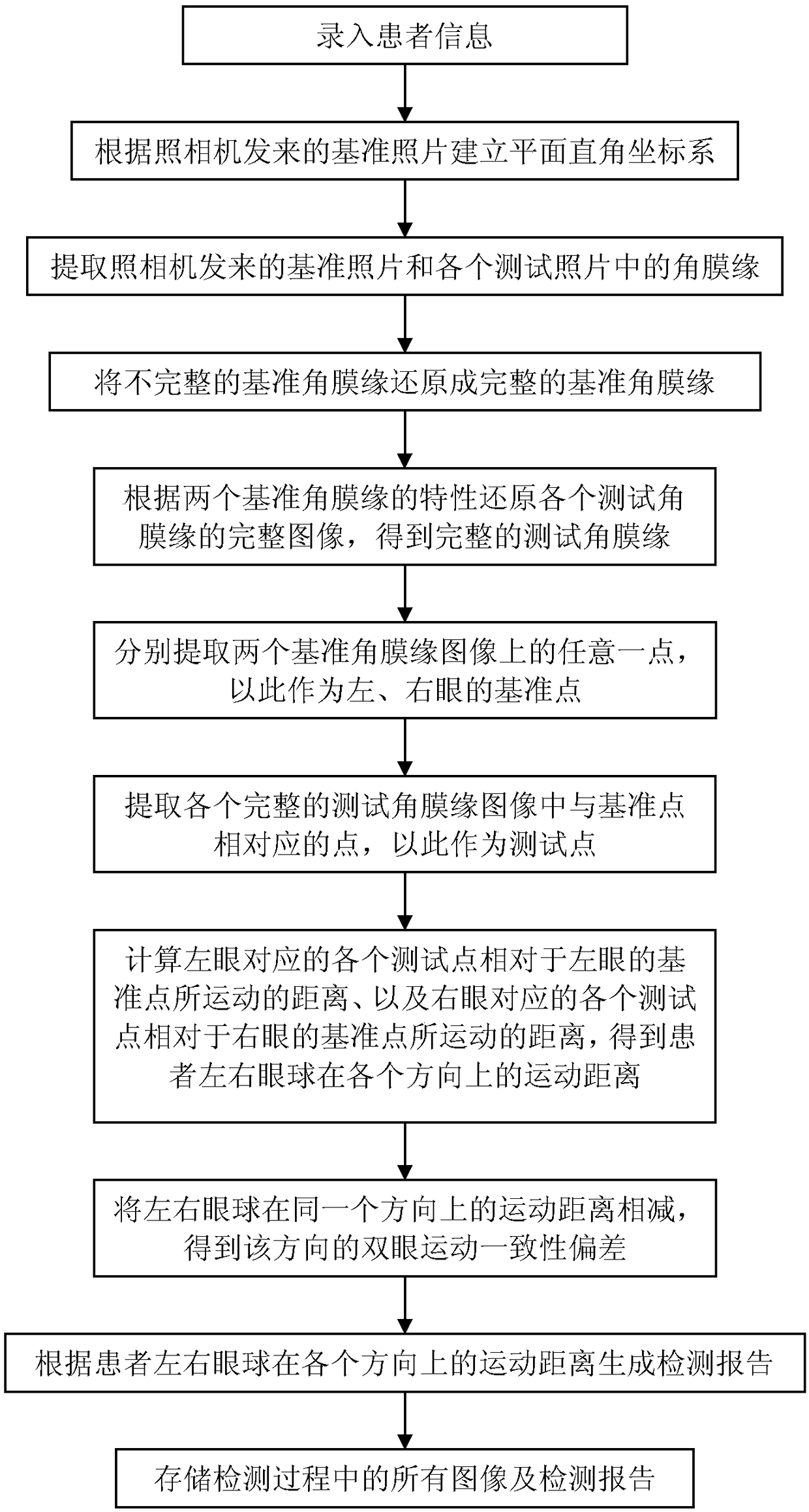A computer-based device and method for detecting eye movement distance and binocular movement consistency deviation
An eye movement and computer technology, applied in the field of medical devices, can solve the problems of inability to accurately detect eye movement distance and eye movement distance, and achieve the effects of low cost, easy operation, accurate detection and quantification
- Summary
- Abstract
- Description
- Claims
- Application Information
AI Technical Summary
Problems solved by technology
Method used
Image
Examples
specific Embodiment approach 1
[0030] Specific implementation mode one: combine figure 1 Describe this embodiment, a computer-based eye movement distance and binocular movement consistency deviation detection device described in this embodiment includes a head fixing mechanism 5, a camera 4 and a computer;
[0031] The head fixing mechanism 5 is used to fix the patient's head, and the camera 4 is used to display the patient's binocular images in real time and send the images to the computer;
[0032] The detection module realized by software is embedded in the computer, and the software adopts VisualC++6.0 to write, and this module includes the following units:
[0033] Coordinate system establishing unit: establish a plane Cartesian coordinate system according to the reference photo sent by the camera 4, the reference photo refers to the photo taken when the patient looks directly at the camera 4;
[0034] Limbal extraction unit: extract the limbus from the reference photos sent by the camera 4 and the li...
specific Embodiment approach 2
[0069] Specific Embodiment 2: This embodiment is a further limitation of the detection device described in Embodiment 1. In this embodiment, the detection module further includes:
[0070] Reference limbus restoration unit: restore the incomplete reference limbus to a complete reference limbus;
[0071] The reference point extracting unit extracts reference points from the complete reference limbus image.
[0072] The size of the eye fissure varies from person to person. People with large palpebral fissures can capture the entire limbus when taking baseline photos, but people with small palpebral fissures can only capture most of the limbus. For this reason, in this embodiment, a reference limbus restoration unit is added to restore the complete reference limbus to obtain a complete reference limbus image. It is more convenient to use the complete reference limbus image to select the reference point.
specific Embodiment approach 3
[0073] Specific Embodiment 3: This embodiment is a further limitation of the detection device described in Embodiments 1 and 2. In this embodiment, the method for extracting the limbus by the limbus extraction unit is: using computer image recognition technology, A test photo is compared with the reference photo, and the same part in the two photos is removed to obtain the reference limbus and the test limbus.
[0074] In this embodiment, the difference image method is used to extract the limbus. Using computer image recognition technology, any test photo is compared with the reference photo, and the same part in the two photos is removed, so that only two limbus remain in each photo.
PUM
 Login to View More
Login to View More Abstract
Description
Claims
Application Information
 Login to View More
Login to View More - R&D
- Intellectual Property
- Life Sciences
- Materials
- Tech Scout
- Unparalleled Data Quality
- Higher Quality Content
- 60% Fewer Hallucinations
Browse by: Latest US Patents, China's latest patents, Technical Efficacy Thesaurus, Application Domain, Technology Topic, Popular Technical Reports.
© 2025 PatSnap. All rights reserved.Legal|Privacy policy|Modern Slavery Act Transparency Statement|Sitemap|About US| Contact US: help@patsnap.com


